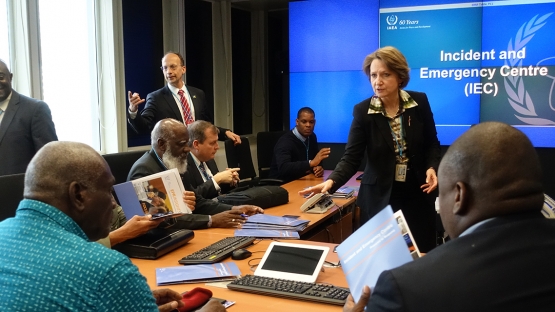Sixteen delegates representing nine states from the Caribbean Community (CARICOM) have visited the IAEA Incident and Emergency Centre (IEC). Ms Elena Buglova, Head of Centre, led the delegates in a tour of the operational centre.
During the tour, the delegates were briefed on the IEC’s role and responsibilities in emergency preparedness and response (EPR), and on the IAEA’s Incident and Emergency System. Ms Buglova described the IEC’s responses to past events and gave the delegates an overview of IAEA Safety Standards and Technical Guidance for EPR. The delegates also saw a demonstration of the different technical tools that the IEC uses to perform assessment and prognosis during nuclear and radiological incidents or emergencies. These tools include International Radiation Monitoring Information System (IRMIS), Emergency Preparedness and Response Information Management System (EPRIMS) and tools for dose assessment.
The IEC and the IAEA’s Department of Technical Cooperation are working to assist Member States in the Latin America and the Caribbean region to create and strengthen their national and regional capabilities in radiation emergency preparedness and response.



